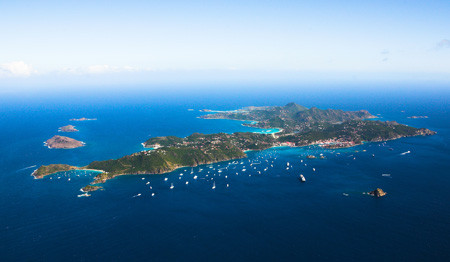St. Barts, a jewel in the Caribbean, is a destination synonymous with luxury, pristine beaches, and an exclusive atmosphere that draws in discerning travelers from across the globe. But for those dreaming of its shores, the first question often is: Where Is St Barts? This enchanting island, officially known as Saint Barthélemy, is nestled in a unique corner of the Caribbean, offering an unparalleled escape for lovers, shoppers, beach aficionados, food connoisseurs, and families alike. Like many who visit, you too might find yourself captivated by St. Barts, longing to return time and time again.
Why does this small island hold such a powerful allure? The answer lies in its exquisite location and the distinctive character it has cultivated.
St. Barthélemy is geographically positioned in the French West Indies, forming part of the Leeward Islands chain within the Lesser Antilles. To pinpoint its location more precisely, St. Barts sits at approximately 17°55 north latitude and 62°50 west longitude. You’ll find it gracing the northeastern edge of the Caribbean Sea, roughly 15 miles southeast of St. Martin. This somewhat secluded location contributes significantly to its charm and exclusivity. The journey to St. Barts requires a little extra effort, a factor that paradoxically enhances its appeal. Those unwilling to make that extra step simply miss out on experiencing this exceptional island paradise.
 Map showing the location of St. Barts in the Caribbean
Map showing the location of St. Barts in the Caribbean
The Geography and Formation of St. Barthélemy
This diminutive island, spanning a mere eight square miles, boasts a captivating landscape of rolling hills and winding roads, a testament to its volcanic origins dating back around 50 million years. This geological history has sculpted a unique terrain that adds to the island’s visual appeal and adventurous spirit. Beyond its natural formation, St. Barts possesses a rich and fascinating history, a narrative deserving of its own exploration. Adding to its distinctive character is the Gustaf III Airport, renowned for its short landing strip which can only accommodate smaller aircraft, typically those with 19 seats or less. This limitation further contributes to the island’s intimate and exclusive ambiance. Moreover, stringent building regulations are in place, famously restricting constructions to be no “taller than a palm tree,” preserving the island’s natural skyline and low-key elegance. These elements combine to create the unique and cherished atmosphere of St. Barts.
 Panoramic view of the hilly landscape of St. Barthélemy island
Panoramic view of the hilly landscape of St. Barthélemy island
Ideal Climate and Weather in St. Barts
The climate in St. Barts is classified as arid, tropical maritime, characterized by brief, infrequent showers. It’s important to distinguish St. Barts from perceptions of typical Caribbean weather, often mistakenly compared to the hotter and more humid summers of Florida. In reality, St. Barts enjoys remarkably consistent temperatures year-round, with daytime and evening temperatures fluctuating between a comfortable 72° to 86° Fahrenheit. Adding to this idyllic climate are the delightful trade winds, known locally as Les Alizés, which enhance the overall comfort and pleasantness of the island.
Sunshine is almost a daily guarantee in St. Barts, making it a reliably sunny destination. This near-perfect weather, coupled with inviting water temperatures averaging 78.8°F in the winter and 84.2°F in the summer, firmly establishes St. Barts as an island paradise and a perfect vacation spot throughout the year.
 Image of a small airplane landing at St. Barth Airport with a beach in the background
Image of a small airplane landing at St. Barth Airport with a beach in the background
Seasonal Considerations for Visiting St. Barts
While St. Barts is a year-round destination, it experiences a quieter period during September and the first half of October. This is when many hotels, restaurants, and boutiques temporarily close. This seasonal closure is largely influenced by the French tradition of extended vacations, where many establishments take advantage of this time for annual refurbishments and to prepare for the bustling season ahead. However, for astute travelers seeking tranquility and a genuine escape, this off-season period presents a unique opportunity to experience St. Barts in a more serene setting. With fewer crowds, those who visit during this time often find they have the island’s stunning beaches practically to themselves, and dining reservations become wonderfully unnecessary. It’s a time for true relaxation and rejuvenation amidst the beauty of St. Barts.
In conclusion, St. Barts’ location in the French West Indies, its unique geography, ideal climate, and exclusive nature all contribute to its status as a premier Caribbean destination. Knowing where St Barts is is just the beginning of understanding the magic of this exceptional island.

